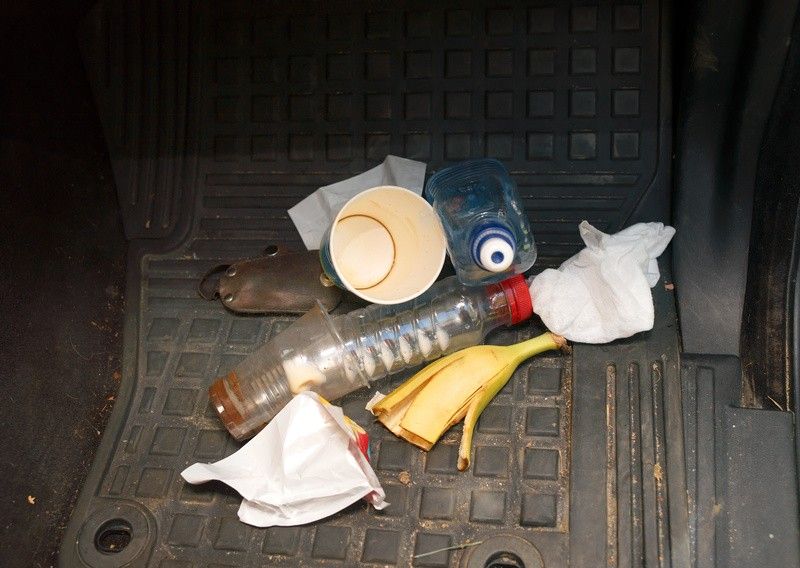>
Blog>
8 easy tips for spring cleaning your car8 easy tips for spring cleaning your car
With the weather beginning to brighten up, many motorists might find themselves with the extra time and sunny weather needed to have a good clean out of their car.
Deep cleaning your vehicle not only makes it look nice, but it can also actually prevent costly maintenance bills down the line. With this in mind, we’ve outlined eight simple steps you can follow to ensure your vehicle is clean and ready to tackle the warmer months.
1. Remove all clutter
Before you start on a deep cleanse of your vehicle, you should begin by removing all of the unnecessary clutter that you don’t need in your car. This can include rubbish and general waste, toys if you’re a parent and any other items that have accumulated over the winter months. Use a black bin bag to collect all of the rubbish and put any items that should be in the house back where they belong so you’re ready to properly begin spring cleaning your vehicle.

2. Start with a deep clean
Next, you'll want to give your car a deep clean.
- This means vacuuming the floors and seats, wiping down the dashboard and door panels and cleaning the windows inside and out.
- Use a high-quality car shampoo to wash the exterior of your car, making sure to get all of the dirt and grime off.
- You can also use a clay bar to remove any embedded contaminants that regular washing won't get rid of.
3. Clean the upholstery
If you have fabric seats, now is the time to give them a thorough cleaning so you can fully enjoy them throughout the rest of spring and summer. You can use a special upholstery cleaner or you can make your own cleaner by mixing equal parts water and vinegar. Use a soft-bristled brush to scrub the seats, and then use a wet and dry vacuum to suck up the moisture. For leather seats, use a leather cleaner to remove any dirt or stains.

4. Don't forget the carpets and floor mats
The carpets in your car can get just as dirty as the seats, especially if you live in an area with a lot of snow, ice and, therefore, salt on the roads. Use a carpet cleaner to remove any stains or ground-in dirt, then use a wet and dry vacuum to remove the moisture. If you have floor mats, be sure to clean them as well. Baking soda is particularly great for floor mats as it’s an odour neutraliser. However, avoid chucking your floor mats in the washing machine as it’s bound to damage the rubber backing on the carpet.
5. Clean the air vents
Over time, the air vents in your car can become clogged with dust and dirt. As a result, this can reduce the effectiveness of your air conditioning and heating system, which might lead to you seeking a costly service much sooner than expected. Use a soft-bristled brush to gently clean the vents, then use compressed air to blow out any remaining debris. Repeat until there are no remnants.
6. Polish the headlights
If your headlights are cloudy or yellowed, they’ll not only be less bright but you could even be hit with a fine for failing to keep them clear.
- You can use a headlight polishing kit to touch up your headlights, or you can make your own mixture by using toothpaste and bicarbonate of soda.
- Apply a small amount of the mixture to the headlight, then use circular motions with a toothbrush to scrub the surface.
- Rinse off the toothpaste with water, then buff the headlight with a dry cloth.

7. Protect the paint
After you've finished cleaning your car, it's important to protect the paint to avoid damage and, as a result, more unwelcome maintenance fees. Use a high-quality wax or sealant to create a barrier between your car's paint and the elements. This will help to prevent damage from UV rays, acid rain and other environmental factors which could lead to expensive touch-ups to the paintwork in the future.
8. Check your tyre pressure and engine fluid levels
Lastly, now that the outside of your car is looking great, why not check under the bonnet to be safe?
- Start by opening your bonnet to check the levels of your engine coolant, screenwash, engine oil and brake fluid.
- Top up any fluids that are low to ensure that you’re fully prepared for any long-distance trips you might have planned over the coming months.
- Lastly, check if your tyres have enough air inside – you can do this easily at most petrol stations.
For a more in-depth check, see our guide to essential car maintenance.
Related Posts